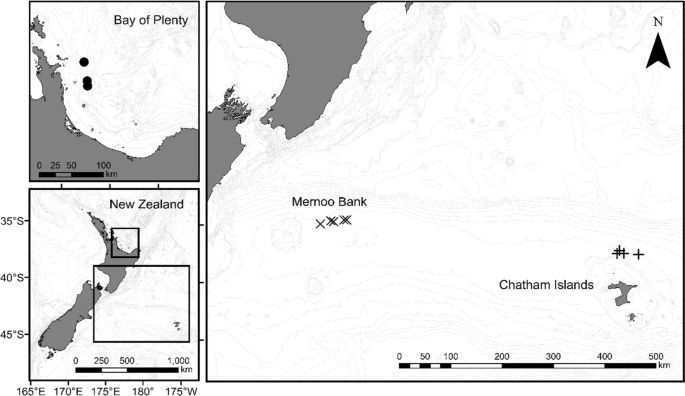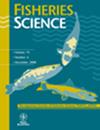The use of cameras on commercial deep-water trawls to investigate habitat associations and scampi trawl efficiency in New Zealand scampi Metanephrops challengeri
IF 1.4
4区 农林科学
Q3 FISHERIES
引用次数: 0
Abstract
Abstract This study assessed the effectiveness of using video cameras mounted on commercial trawls for a deep-sea lobster, the New Zealand scampi Metanephrops challengeri , for acquiring information on habitat associations of demersal species and fishing efficiency. Randomly selected frames from 1 h of recording replicated over 12 trawls and conducted over three fisheries management areas (FMA), were analysed for counts of visible scampi, scampi burrows, visible topographical features and visible epifauna and fish taxa. Poisson regression analysis indicated a positive relationship between the distribution of scampi burrows (a proxy of scampi abundance) and conical mounds (formed by bioturbators), but a negative relationship with smooth topography. Counts of scampi burrows were also positively associated with counts of visible scampi for four trawls, while significant relationships were seldom found between counts of scampi burrows and other commonly observed individual taxa. Scampi trawl efficiency was low, with only 56 of the 186 observed scampi (30%) passing over the footrope and into the trawl net. The results confirm the effectiveness of video sampling from commercial trawls to improve our understanding of habitats and fishing efficiency in deep-sea fisheries.

在商业深水拖网上使用相机调查新西兰虾类栖息地关联和虾类拖网效率
摘要:本研究评估了在商业拖网上安装摄像机捕捉深海龙虾新西兰螯虾(Metanephrops challengeri)的有效性,以获取底栖物种栖息地关联信息和捕捞效率。在3个渔业管理区(FMA)上,从12条拖网上复制的1小时记录中随机选择帧,分析了可见虾、虾洞、可见地形特征和可见表动物和鱼类分类群的数量。泊松回归分析表明,虾洞(虾丰度的代表)的分布与由生物扰动器形成的圆锥形丘呈正相关,而与平坦的地形呈负相关。在4个拖网中,虾洞的数量与可见虾的数量也呈正相关,而虾洞的数量与其他常见的个体分类群之间很少发现显著的关系。虾的拖网效率较低,186只虾中只有56只(30%)越过海底进入拖网。研究结果证实了商业拖网视频采样的有效性,可以提高我们对深海渔业栖息地和捕捞效率的认识。
本文章由计算机程序翻译,如有差异,请以英文原文为准。
求助全文
约1分钟内获得全文
求助全文
来源期刊

Fisheries Science
农林科学-渔业
CiteScore
3.80
自引率
5.30%
发文量
0
审稿时长
12-24 weeks
期刊介绍:
Fisheries Science is the official journal of the Japanese Society of Fisheries Science, which was established in 1932. Recognized as a leading journal in its field, Fisheries Science is respected internationally for the publication of basic and applied research articles in a broad range of subject areas relevant to fisheries science. All articles are peer-reviewed by at least two experts in the field of the submitted paper. Published six times per year, Fisheries Science includes about 120 articles per volume. It has a rich history of publishing quality papers in fisheries, biology, aquaculture, environment, chemistry and biochemistry, food science and technology, and Social Science.
 求助内容:
求助内容: 应助结果提醒方式:
应助结果提醒方式:


